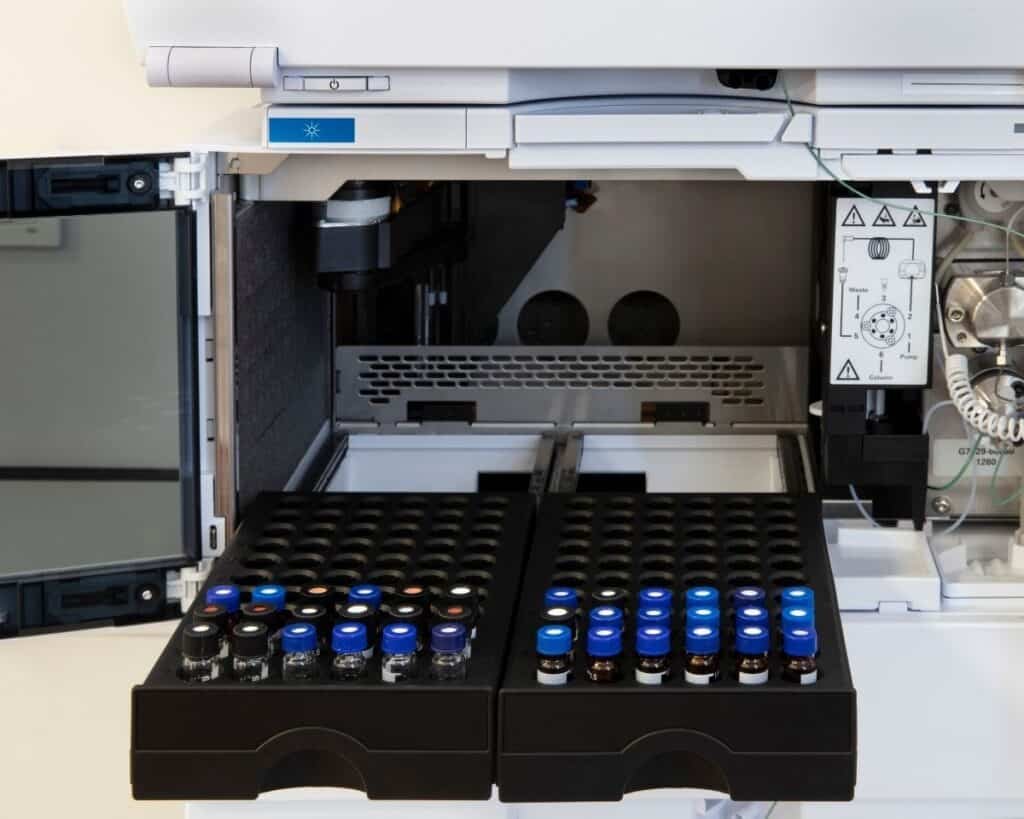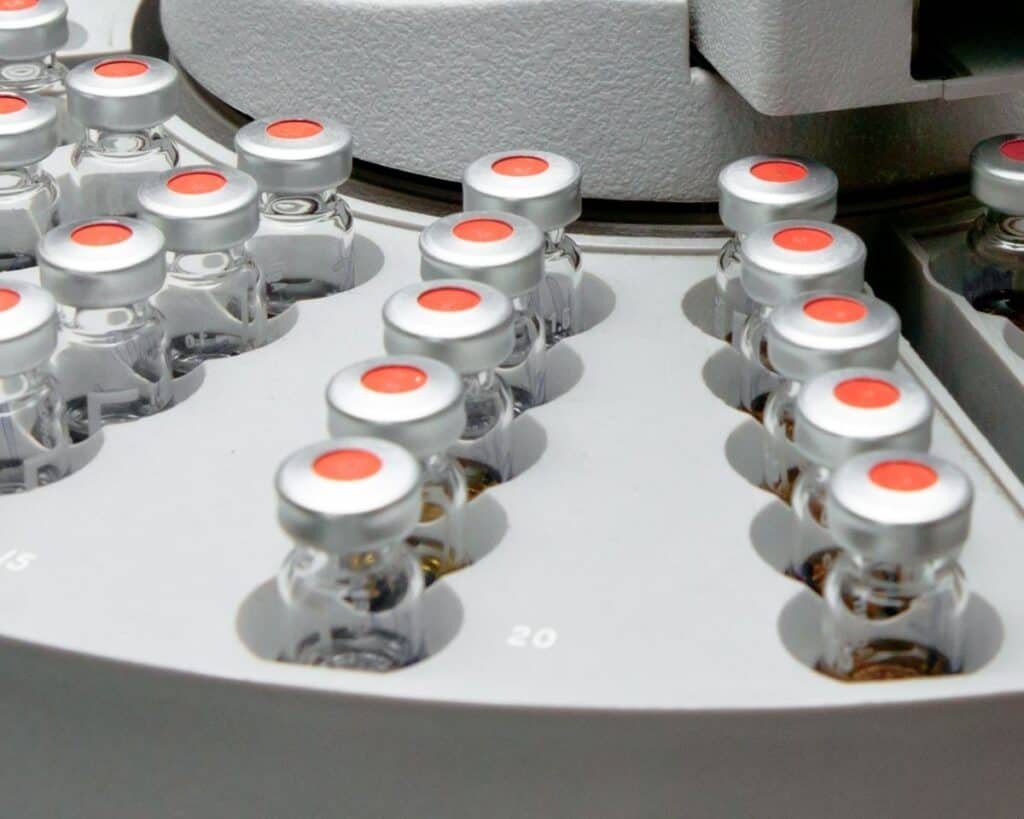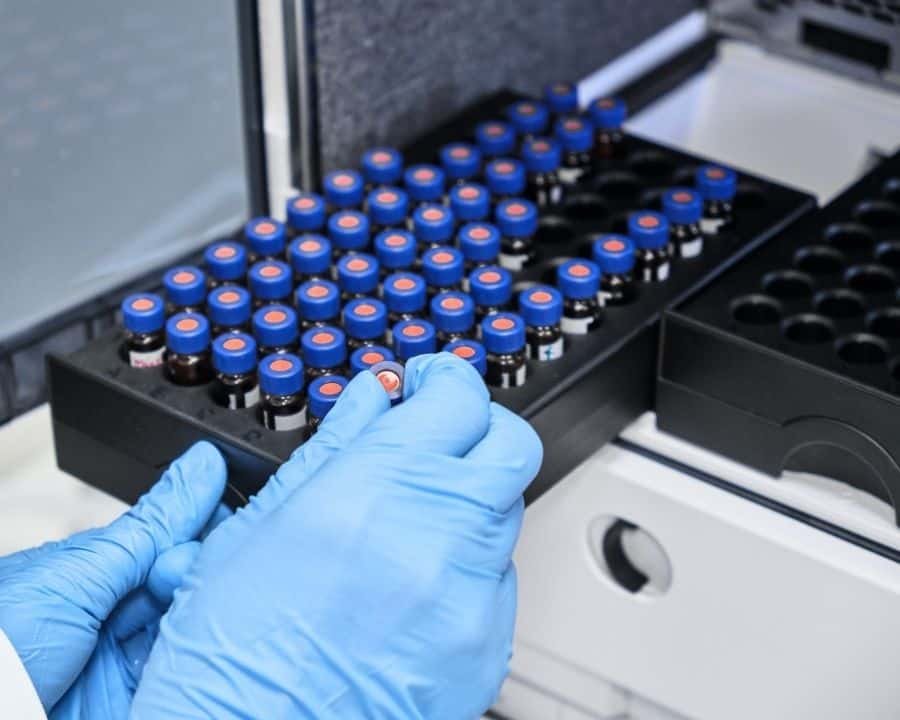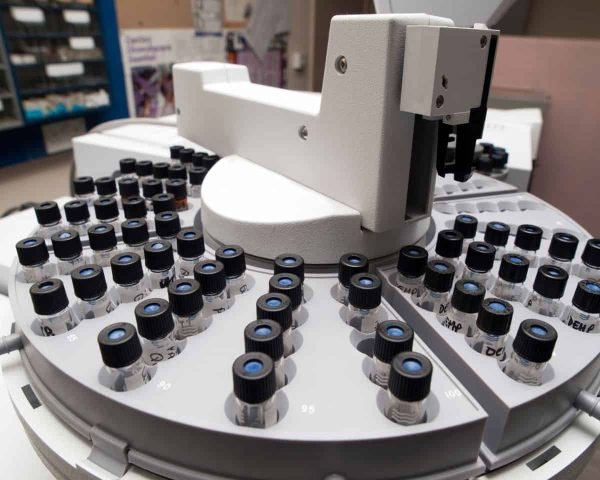There is a lot of information about chromatography, one of the most commonly used biotechnology techniques. We, researchers and scientists, use it in everyday situations – and some of them, people often don’t think or know about.
Chromatography is a technique researchers use in, for example, food or drug analysis. But, apart from that, there are a lot of studies in which chromatography is a technique very much needed.
In this article, you will find what the definition of chromatography is. In addition, you will learn what the applications and methods are. Some fun facts or information are included in the article to have a better perspective on what chromatography is and what it can do.

The Definition of Chromatography Analysis
Chromatography is an extraordinary method used to separate simple and complex mixtures. Researchers use this kind of analysis daily to see each compound in a combined mixture.
In layman’s terms, imagine you have a cup of coffee in front of you. Now, your coffee consists of the brew, the milk, and the sugar. But, all the ingredients are combined, and you can’t see the components separately.
Now, chromatography can separate those ingredients to see more clearly what is inside. But, of course, all the information is proteins and molecules.
There are many forms of chromatography and many different types. Furthermore, all these types and methods operate differently, so it is crucial to work on them with a dose of care.
We often use chromatography analysis in our laboratory. It helped us learn how each particle works and how each reacts when in contact with something different.
While it is so much fun to understand how things work, you need to know about it. So, keep reading for more facts and information.
What are the Six Main Methods of Chromatography?
There are many types of chromatography, but we will talk about the six main ones.
Those are:
1. High-Performance Liquid Chromatography (HPLC)
2. Gas Chromatography (GC)
3. Paper Chromatography (PC)
4. Mass Spectrometry Chromatography (MSC)
5. Thin-Layer Chromatography (TLC)
6. Ion Exchange Chromatography (IEC)
In addition, you can also find the related article we have for you briefly.
Let’s start right away. You will learn about where the scientists use each particular method, how we work, the applications, and which instruments you’ll need for the whole process.
1. High-Performance Liquid Chromatography (HPLC)
HPLC is a technique that first separates the particles and then identifies them. The last part of the job is quantifying every separated particle.
There are several instruments that we use in HPLC, like:
1. High-pressure pump – HPLC relies on high-pressure pumps. It moves the sample through a column. You have to fill the column with material for it to work.
2. Column – helps your particles find their way through the pump. It also separates the particles.
3. Solvent reservoir – it holds the liquid (solvent), and it is a mobile phase.
4. Detector – it separates the bands after they elute.
5. Injector system – as the name states, it injects the liquid into a phase stream.
Now to explain a bit how it all works. Well, each component in a mixture goes through the process of:
1. separation,
2. identification, and
3. quantification.
Scientists employ the above-mentioned pumps on a regular basis in HPLC analysis. Inside the pumps, a pressurized liquid solution holding the sample travels. This action takes place in a column containing a solid adsorbent material.
Every component interacts with the adsorbent material in a different way. The flow rates and spacing of the components fluctuate as the pieces flow out of the column.
2. Gas Chromatography
GC is one of the most used types of chromatography. It is straightforward to handle, and it effectively isolates the particles.
So, what is the Gas Chromatography?
It is a technique that separates the chemical parts of the whole mixture. Then, close to the end of the application, the GC shows how much of the mix is present on the part he isolated.
Just make sure to make the components volatile and thermally stable. Also, as the name states, chemical parts are almost always gases or molecules.
We will write all the instruments you need for the GC analysis to work perfectly.
1. Detectors – they count how many components are in the sample.
2. Column – the sample travels in the column, and you put it in the oven for further analysis.
3. Sample injection – it injects the sample in GC.
4. Carrier gas – this is a mobile phase. It runs in columns and acts as a carrier to a sample to move it through the column. The carrier gas has a few characteristics – for example, it must be pure.
3. Mass Spectrometry Chromatography (MSC)
There are several types of MSC:
1. Liquid Chromatography-Mass Spectrometry (LC-MS)
LC – MS’s duties are to combine HPLC and mass spectrometry abilities. Those abilities would be physical separation from HPLC’s side and analysis on MS’s side.
2. Gas Chromatography-Mass Spectrometry (GC – MS)
Also an analytical type, but this one identifies different chemicals per test sample. It also combines the abilities of both GC and MS.
MSC can study a lot of molecules, and it doesn’t matter to MSC if the molecules are from the same family or not.
To finish this section with complete information, you should take a look at the general types of mass analyzers:
- Magnetic Sector Mass Analyzer
- Quadrupole Mass Analyzer
- Quadrupole Ion Trap Mass Analyzer
- Ion Cyclotron Resonance
- Time of Flight Mass Analyzers
- Electrostatic Sector Mass Analyzer
A mass analyzer is a part of a mass spectrometer that accepts ionized masses. It separates them based on charge-to-mass ratios before sending them to the detector.
When they find their way to the detector, they need to be detected and converted to a digital output.
4. Thin-Layer Chromatography (TLC)
To be as understandable as one can be – TLC is a flexible, affinity-based method that researchers use for quantitative and qualitative analysis.
More instruments are used in this chromatography method than the others we listed. Here they are:
1. Stationary Phase
2. Mobile Phase
3. Filter paper
4. Analyte
5. Micropipette
6. Detecting and visualizing agents
7. Forceps
8. Pencil
9. Ruler
10. TLC plate
11. Containers for development – a jar or a chamber
How does it work?
TLC is made up of two main components: a thin adsorbent material layer and an inert plate surface. The first is usually silica gel or aluminum oxide.
Glass, plastic, or metal are commonly used for the first. Glass, plastic, or metal are commonly used for the second.
At one end of the TLC plate, place the sample in an organic solvent-filled chamber (mobile phase).
5. Paper Chromatography (PC)
PC is a method that scientists use when they want to know exactly how pure the chemical is. Apart from knowing how pure one sample is, it determines what the chemical is.
For this analysis, you should always use high-quality purified cellulose paper.
Instruments you will need to complete paper chromatography analysis:
1. Detecting agents
2. Visualizing agents (if you don’t use detecting agents)
Both of these will act as color-reducing reagents in the analysis.
3. Stationary phase and papers
4. Mobile phase
5. Developing chamber – Solvent vapor saturates the developing chamber.
6. Ion Exchange Chromatography
Ion Exchange Chromatography, or simply ion chromatography, is a separation process.
But, to be more detailed, it is a process of molecules separation.
You can use ion-exchange chromatography with two exchangers. Let’s define them both.
The first one is a cationic exchanger. Cationic exchangers have a negatively charged group that attracts positively charged ions.
The second name of the cationic exchanger is acidic ion exchange material. That is because their negative charges come from the ionization of an acidic group.
The second exchanger is an anionic one. Positively charged groups on anionic exchangers attract negatively charged anions. These materials are also referred to as “basic ion exchange” materials.
Column chromatography is the most common kind of ion-exchange chromatography. Apart from that, thin-layer chromatographic techniques rely on the concept of ion exchange.
We wrote about the instruments researchers use in the analyses before, so let’s do the same here.
These are the instruments:
1. Columns
2. Injector
3. Pump
4. Suppressor
5. Data system
6. Detectors

What are the Applications of Chromatography?
Now that we defined all the main types of chromatography, we want you to know what the applications are.
There are many applications today, and most people don’t even know they exist. But you’ve landed on the right page because we use them all and have a lot of examples to share with you.
For example, Ebola was finally defeated when researchers used chromatography.
The deadly Ebola virus has sparked concern in the media and the countries of Sierra Leone, Guinea, and Liberia. These are the countries where the researchers found the virus. The virus has taken over 5,000 people since its emergence late last year,
Chromatography is quite valuable. For example, it could establish which antibodies are more successful in neutralizing Ebola.
There is more:
The 2013 horsemeat crisis exposed that shady meat dealers were substituting horsemeat for beef patties. Unfortunately, the previous meat detection and procedures were inconclusive, so chromatography rode in on a white, well, horse.
Also…
You may have pondered how the smooth liqueur’s makers keep their quality standards. Well, we have a great example – Jägermeister.
Jägermeister’s people take their brand very seriously. They closely regulate the amount of sugar in the finished product.
With no room for error, chromatography is once again relied upon to verify that every bottle is of the highest quality… and that you have a night to remember (or forget).
Finally, let’s start by describing the applications of each chromatography type. You must be nervous because we are! A good nervous, of course.
1. High-Performance Liquid Chromatography
It would be only fitting to start with the HPLC type of chromatography.
The applications of the HPLC analysis are numerous.
For example, scientists can use HPLC for medical reasons, research, legal, or even manufacturing.
Let’s talk about the manufacturing part. So, the HPLC has a vital role in purifying the components, so it is excellent for making drugs. So when we say manufacturing, we mean the pharmaceutical industry.
2. Gas Chromatography
Gas chromatography (vapor-phase or gas-liquid partition) also has many applications.
Some of them are for testing food and beverages or drugs. But, apart from testing stuff, it is a beneficial analysis in forensics.
When testing food, GC determines if the meat is pure beef or did someone had it blended with something else. It’s the same when inspecting the beverage market, ensuring that each container is identical.
Also, there is the creating the part of the vaccine, so when COVID-19 came, scientists used GC analysis A LOT.
3. Mass Spectrometry Chromatography
MSC is widely used in many fields.
Proteomics is the initial application. This term refers to identifying a protein and its complexes and the sequencing of peptides.
Scientists also use it in cancer screening and diagnostics, and metabolomics. There is also biomarker identification and global metabolic fingerprinting analysis.
Water testing, chemicals, carbon dioxide, environment monitoring, and other environmental analyses are available.
Drug discovery, ingestion, and misuse of drugs detection are also part of MSC analysis. Apart from that, there are distribution, metabolism, and therapeutic uses. There’s also trace evidence analysis, arson investigation, and so on in forensics.
Clinical drug development is one of the uses of clinical mass spectrometry. Also, there are clinical diagnostics, illness screenings, and so forth.
As you can see, there are so many applications for the famous MSC!
4. Thin-Layer Chromatography
When talking about TLC, the first thing that comes to our mind is colors. The reason must be the fact that TLC identifies and quantifies colors, as well as the sweetening agents and components.
Same as before, you can use it in drug, forensic, and pharmaceutical analysis. You can check for chemical reactions or do a rapid screening before the HPLC analysis.
TLC has a lot of applications, as do others, so let’s continue with the last application.
One of its shortcomings is that it cannot distinguish between enantiomers and specific isomers. It can’t do it even though it is a straightforward procedure.
Another disadvantage of TLC is that you must know the Rf values for the compounds of interest ahead of time. You have to know it so you can identify them.
5. Paper Chromatography
Paper chromatography is often used in the cosmetics industry.
Lipstick hues are typically created by combining many pigment components. You can use paper chromatography to separate these pigments.
But, the cosmetics industry didn’t reserve the PC only for that. There are a lot of applications for the PC:
1. Purity control for pharmaceuticals
2. Contamination detection
3. Finding contaminants in food and beverages
4. Drug detection in people and animals
6. Ion Exchange Chromatography
IEC also has a lot of applications, but it is not as used as the previous ones. Here is a list of applications:
1. The regular examination of amino acid combinations
2. For use in clinical diagnosis. Because it has twenty essential amino acids that isolate from blood serum, you can use it.
3. This is the most efficient way of purifying water.
a) exchanging solute cations for hydrogen ions and
b) exchanging solute anions for hydroxyl ions…
….results in complete deionization of water (or) a non-electrolyte solution. This is commonly accomplished through the softening of the drinking water approach.
4. In the analysis of nucleic acid hydrolysis products.
This provides insight into the structure of these molecules. And also how it connects to their biological function as hereditary information carriers.
5. To recover trace metals from saltwater, you can use chelating resins and IEC
6. On Earth, to examine lunar rocks and distinctive trace elements.
What are the Characteristics of All Chromatography Methods?
The definition is the first item that is the same. It refers to a collection of methods for separating the constituents of chemical mixtures.
Chromatography works on the same basis in all forms. A fixed phase (a solid or a liquid supported on a solid) and a mobile phase are present in all of them (a liquid or a gas). The mobile phase passes through the stationary phase, carrying the mixture’s components with it.
What Is the Difference Between Thin Layer Chromatography and Paper Chromatography?
Smaller molecules are better separated by a thin layer. Using one or the other will depend on which molecules you need to analyze.
What Is Ion Exchange Chromatography and How Does It Work?
The column is brimming with tiny beads. These beads can be charged positively or negatively.
Proteins with opposite charges stay in the column, whereas proteins with the same charges flow out.

Conclusion
While we explained only six chromatography types, there are many more. Chromatography is a separation technique, and that separation is different with each analysis.
For example, there is a dye-ligand chromatography, a hydrophobic interaction chromatography, a pseudoanaffinity chromatography, and many more.
Chromatography is an amazing field to work in. There is so much to learn that you will never have a dull day in the lab.
And since we get many questions from our readers, we couldn’t finish this article without answering to a few FAQs related to the topic.
Moreover, if you would like to read more of our interesting articles about chromatography, please refer to our blog.











